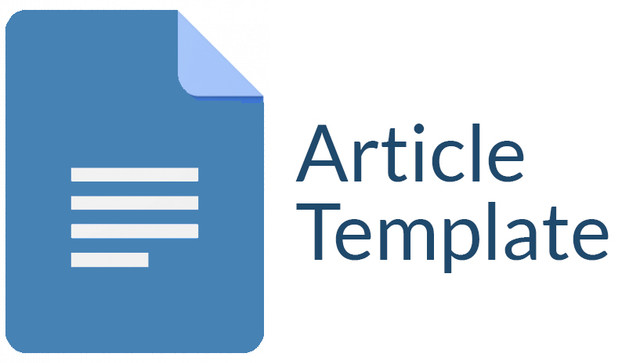MENINGKATKAN KEMAMPUAN MINDS-ON DAN HANDS-ON SISWA MATERI BANGUN DATAR DENGAN MENGGUNAKAN METODE TALKING STICK
DOI:
https://doi.org/10.30736/atl.v3i1.198Keywords:
Mids-on and Hands-On, Talking StickAbstract
Learning materials in  two-dimentional figure in class II at MI Sunan Giri Merjosari Malang there are several problems namely students tend to be passive and the learning atmosphere is less pleasant because the teacher is more dominant using the lecture method so that the impact on student learning outcomes is less than the specified KKM 75 amounting to 60% of the 20 overall total students. One of the ways to improve the quality of student learning is to apply learning methods that later learning objectives can also be maximally achieved. Very diverse learning methods adapted to the material and objectives to be achieved include talking stick method including one of the learning methods carried out with the help of a stick and in turn will be held by students and who hold the mandatory answer questions from the teacher. Learning with the talking stick method is very suitable to be applied in elementary, because it can train students cognitive and psychomotor abilities, besides that the learning atmosphere is also fun and active students. This talking stick method is very appropriate to be used in the development of students' minds-on and hands-on. The purpose of this study was to determine the application of the talking stick method and the improvement of the minds-on and hands-on abilities of students in the Flat Build Class II MI Sunan Giri Merjosari Lamongan after using the talking stick method. Researchers conducted using a qualitative approach to the type of classroom action research (CAR). Analysis of the data used is descriptive qualitative techniques. The sequence of research activities includes 4 stages including: (1) Planning, (2) Implementation, (3) Observation, and (4) Reflection. The results of the study obtained the results of the assessment of learning outcomes of the two-dimentional figure material both cycle I and cycle II of Minds-on ability in cycle I amounted to 82.25 compared to the value of Minds-on in cycle II amounted to 85.5 an increase of 3.25. Likewise with the Hans-On ability assessment there was also an increase between Cycle I an average value of 75.45 and a second cycle of 80.95 an increase of 5.5. Based on the results of the analysis of the research data it can be concluded that the use of the talking stick method can improve the minds-on and hands-on abilities of thematic learning in Class II theme 4 Flat Build Material and its properties in MI Sunan Giri Merjosari Malang and its implementation can run effectively and efficient.Downloads
References
Afandi, M. (2013). Model dan Motode Pembelajaran. In Unissula press.
Agus Suprijono. (2010). Cooperative Learning Teori dan Paikem. Kumpulan Metode Pembelajaran.
Arikunto, S. (2006). Prosedur Penelitian Tindakan Kelas. Bumi Aksara.
Desmita. (2010). Psikologi Perkembangan Cetakan Ke-IV. Bandung: PT. Remaja Rosdakarya Offset. https://doi.org/10.1017/CBO9781107415324.004
Gugus, D. I., Kecamatan, V. I., Heriasa, I. K., Arini, N. W., & Rati, N. W. (2014). PENGARUH METODE TALKING STICK TERHADAP HASIL BELAJAR IPA SISWA KELAS V SD NEGERI 1 KARANGASEM TAHUN PELAJARAN 2013/2014. PENGARUH METODE TALKING STICK TERHADAP HASIL BELAJAR IPA SISWA KELAS V SD NEGERI 1 KARANGASEM TAHUN PELAJARAN 2013/2014.
Hendriana, H., & Afrilianto, M. (2017). Langkah Praktis Penelitian Tindakan Kelas Bagi Guru. Bandung: Refika Aditama.
Heruman. (2008). Model Pembelajaran Matematika di Sekolah Dasar. Bandung: PT Remaja Rosdakarya.
Indriani, O. (2013). Upaya Meningkatkan Kemampuan Mengidentifikasi Keanekaragaman Budaya Indonesia Melalui Metode Talking Stick. Didaktika Dwija Indria.
Kusumo, G. (2017). Metode Pembelajaran. Macam Metode Pembelajaran.
Langgulung, H. (1988). Asas-Asas Pendidikan Islam. Pustaka Al-Husna.
Moleong, L. J. (2017). Metodologi Penelitian Kualitatif (Edisi Revisi). In PT. Remaja Rosda Karya.
Sanjaya, W. (2010). Strategi Pembelajaran Berorientasi Standar Proses Pendidikan. System.
Sibuea, M. S. W. B., & Syahfitri, D. (2018). Metode Tongkat Berbicara (Talking Stick) dalam Pembelajaran Keterampilan Berbicara Menanggapi Cerita Pendek. Jurnal Penelitian Dan Pengembangan Sains Dan Humaniora. https://doi.org/10.23887/jppsh.v2i1.14007
Suharjana, A. (2008). Pengenalan Bangun Datar dan Sifat-Sifatnya di SD. Yogyakarta: Pusat Pengembangan dan Pemberdayaan Pendidik dan Tenaga Kependidikan Matematika.
Sutikno, M. S., & Fathurrohman, P. (2010). Strategi Belajar Mengajar Melalui Penanaman Konsep Umum & Konsep Islami. Bandung: Refika Aditama.
Syah, M. (2010). Psikologi Pendidikan dengan pendekatan Baru. Psikologi Pendidikan dengan pendekatan Baru.
Tarigan, D. (2018). MENINGKATKAN HASIL BELAJAR SISWA DENGAN MENGGUNAKAN MODEL REALISTIC MATHEMATICS EDUCATION (RME) PADA MATA PELAJARAN MATEMATIKA DI KELAS V SDS SALSA CINTA RAKYAT. ELEMENTARY SCHOOL JOURNAL PGSD FIP UNIMED. https://doi.org/10.24114/esjpgsd.v8i4.11878
Wahidmurni. (2008). Penelitan Tindakan Kelas Dari Teori Menuju Praktik. Malang: UM PRESS
Downloads
Published
How to Cite
Issue
Section
License
Authors who publish with this journal agree to the following terms:
The journal allow the authors to hold the copyright without restrictions and allow the authors to retain publishing rights without restrictions. Authors retain copyright and grant the journal right of first publication with the work simultaneously licensed under a Creative Commons Attribution-ShareAlike 4.0 International License. that allows others to share the work with an acknowledgement of the work's authorship and initial publication in this journal.
Authors are able to enter into separate, additional contractual arrangements for the non-exclusive distribution of the journal's published version of the work (e.g., post it to an institutional repository or publish it in a book), with an acknowledgement of its initial publication in this journal.
Authors are permitted and encouraged to post their work online (e.g., in institutional repositories or on their website) prior to and during the submission process, as it can lead to productive exchanges, as well as earlier and greater citation of published work (See The Effect of Open Access).
The journal allows third parties (readers, researchers, and others) to share and adapt the material in line with the license. In addition, the material must be given appropriate credit, provided with a link to the license, and indicate if changes were made. If authors remix, transform, or build upon the material, they must distribute their contributions under the same license as the original.













